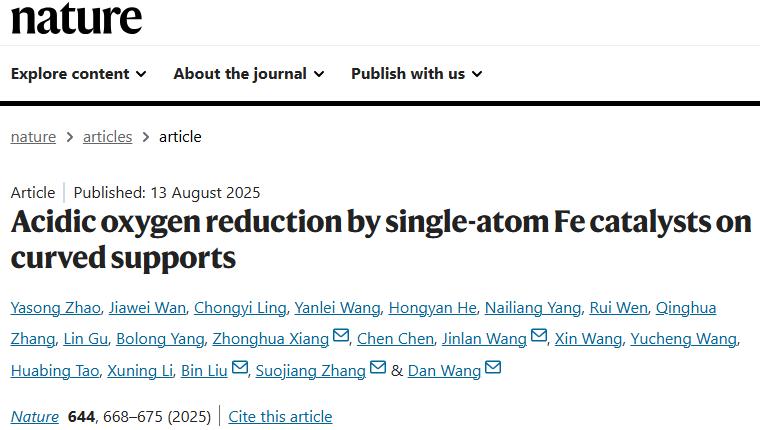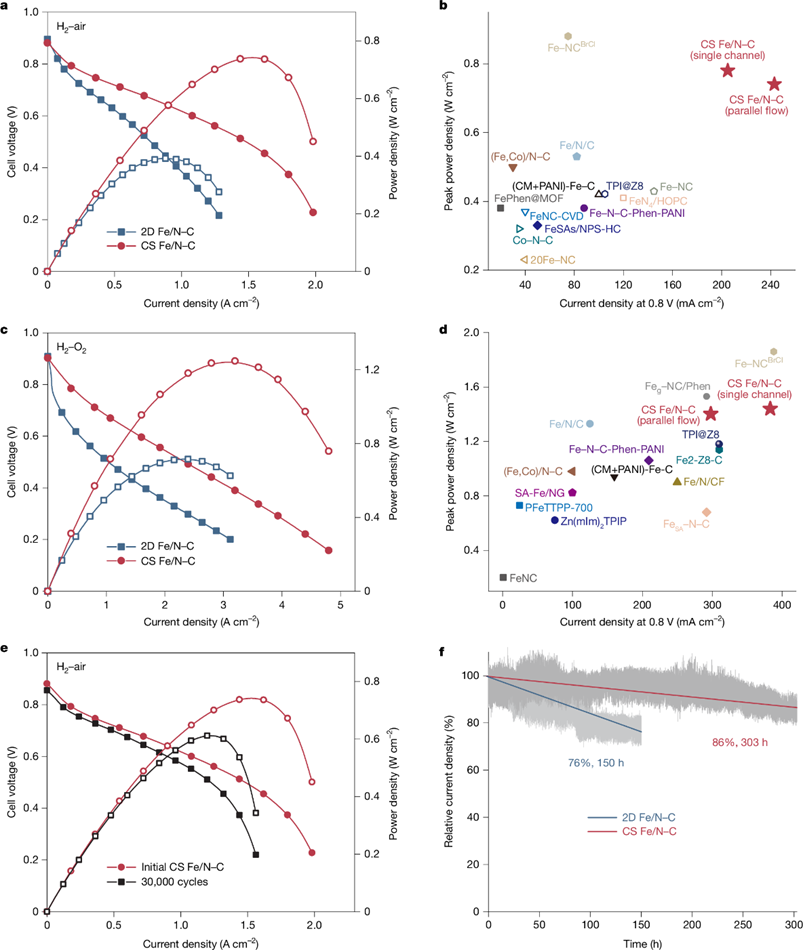On August 13, Professor Zhonghua Xiang's team from Beijing University of Chemical Technology, in collaboration with teams under Professor Dan Wang from Shenzhen University, Professor Jinlan Wang from Southeast University, Professor Bin Liu from City University of Hong Kong, and Academician Suojiang Zhang from the Institute of Process Engineering, Chinese Academy of Sciences, has innovatively designed and synthesized a single-atom iron catalyst with a hollow multi-shelled structure (CS Fe/N-C). This novel catalyst achieves simultaneously high activity and stability in hydrogen fuel cell performance. The related findings were published in the journal Nature under the title “Acidic oxygen reduction by single-atom Fe catalysts on curved supports”.

Developing non-precious metal electrocatalysts that combine high activity with long-term durability is a central challenge for enabling cost-effective and large-scale commercialization of proton exchange membrane fuel cells (PEMFCs). Although Fe/N-C catalysts are considered the most promising alternatives to platinum-group metals, their catalytic activity and operational stability under harsh acidic PEMFCs conditions remain insufficient. To address this challenge, the collaboration team designed and synthesized a hollow multishell structured single-atom Fe catalyst (CS Fe/N-C). The catalyst features atomically dispersed Fe sites embedded within the concave curved surfaces of nanoscale protrusions on two-dimensional carbon shells.

Professor Xiang’s group was responsible for evaluating, optimizing, and enhancing the device-level performance and durability of the CS Fe/N-C catalyst under practical PEMFCs operating conditions. By employing a dynamic electro-mass coupling model, the team reinforced mass transport within the catalytic layer, thereby maximizing the exposure of active centers. Systematic testing confirmed that CS Fe/N-C delivers near-practical power densities under stringent PEMFCs operating conditions, significantly outperforming most previously reported non-platinum Fe/N-C catalysts. This provides a solid experimental foundation and a performance benchmark for future application in actual fuel cell systems.
This Nature publication exemplifies multi-institutional collaboration and synergistic innovation. Professor Xiang’s team, leveraging its extensive expertise in fuel cells and the proprietary dynamic electro–mass transport coupling strategy, made pivotal contributions to this breakthrough. The work represents a solid step forward in advancing the development of next-generation, cost-effective, high-performance fuel cells.
Paper Link: https://www.nature.com/articles/s41586-025-09364-6
